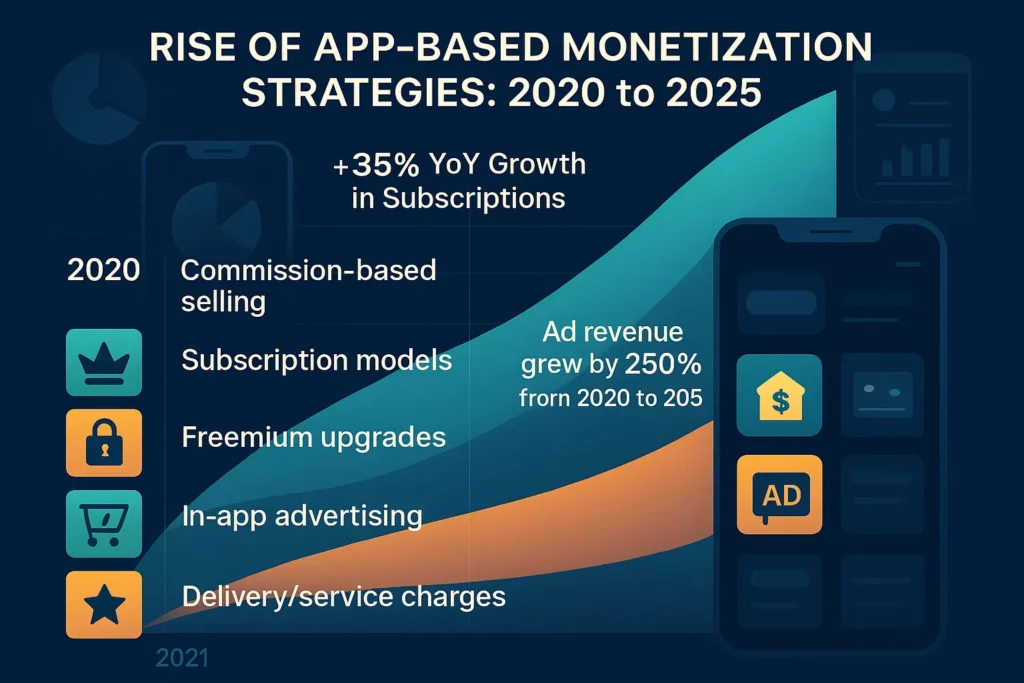Ever clicked “Buy Now” without even thinking twice? Welcome to the magic of modern e-commerce. These platforms have turned our impulse buying into a business strategy. But behind every effortless checkout is a razor-sharp revenue model silently working its magic. If you’re building or running an e-commerce app in 2025, understanding that model is not just helpful—it’s make-or-break.
Take Ravi, for example. A 26-year-old tech founder in Mumbai who cloned a grocery app to serve his neighborhood. He thought sales would equal profit. But three months in, he was bleeding cash. Turns out, choosing the wrong monetization path is like driving a Ferrari with a flat tire.
So, if you’re someone looking to build an e-commerce app that doesn’t flop, this blog is your map. And guess what? Platforms like the FreshDirect Clone from Miracuves are already paving the way—ready to plug in revenue features from day one.
Why Revenue Models Matter More Than Ever
2025 isn’t about just building apps. It’s about building businesses. Consumers are savvier, competition is brutal, and investors want to see actual returns. Your revenue model isn’t just a financial plan—it’s your growth engine, investor magnet, and sustainability strategy.
Gone are the days when apps could burn VC cash endlessly. Now, it’s about recurring income, margin control, and upselling mastery. A well-thought-out revenue structure can make even niche grocery delivery apps like FreshDirect Clone scale faster than a trending Reel.

Popular Revenue Models for E-commerce Apps
1. Commission-Based Model
This is the bread and butter. You let vendors list products and take a cut on every sale. Think Amazon, Flipkart, and yes—your FreshDirect Clone.
Pros: Low upfront cost for sellers, scalable revenue.
Cons: Volume dependent, margin pressure in competitive niches.
2. Subscription Plans
Give users premium benefits: faster delivery, early access, exclusive discounts. Hello, Amazon Prime!
Great for: Grocery delivery models like FreshDirect Clone that rely on frequent purchases.
3. Freemium Upsell Model
Let users use the basic app for free but lock advanced features behind a paywall. Ideal for B2B e-commerce tools or SaaS-linked stores.
4. Ad-Based Revenue
Not just Google’s game. E-commerce apps use native ads, promoted listings, and even video placements.
Example: Show a featured product on the homepage. Charge per view or per click.
5. Private Labeling
Sell your own branded products via the app. Think Amazon Basics. High margins, strong branding.
Pro tip: Great for niche-focused e-commerce like organic grocery, pet supplies, or ethnic foods.
6. Delivery Charges
Yes, people still pay shipping fees—when it’s positioned right. Use it as a loyalty nudge (“Free delivery on orders over ₹999”) or dynamic pricing tool.
Choosing the Right Model: Factors to Consider
A. Product Type & Frequency
Groceries? Subscriptions make sense. Luxury goods? Commission-based works better.
B. User Behavior & Geography
Urban users may pay for speed. Rural customers might prefer lower prices over delivery perks.
C. App Stage & Capital
Bootstrapping? Start with commission. Funded? Try a multi-model hybrid.
The FreshDirect Clone Revenue Playbook
Miracuves’ FreshDirect Clone is a masterclass in monetization flexibility. It supports:
- Commission splits with vendors
- Subscription layers for loyal users
- In-app ads and cross-promotions
- Real-time delivery fee logic
Best part? You don’t have to code it from scratch. Just configure the model you want, and you’re ready to roll.
Monetization Pitfalls to Avoid
- Too many revenue models: Confuses users, increases churn.
- Hidden charges: Breaks trust. Always show the total cost upfront.
- Poor UX around payment: If checkout feels like a maze, your revenue dies there.
- No feedback loop: Not tracking what works is like throwing darts in the dark.
Conclusion & Final Thoughts
In e-commerce, ideas are a dime a dozen. But execution? That’s where money lives. Nail your revenue model early, and you won’t just survive—you’ll scale.
At Miracuves, we help innovators launch high-performance app clones that are fast, scalable, and monetization-ready. Ready to turn your idea into reality? Let’s build together.
FAQs
Q1. What is the best revenue model for grocery apps?
Subscription + commission is a winning combo. Think FreshDirect Clone + Prime perks.
Q2. Can I mix multiple revenue models in one app?
Yes, but only if it’s clear and doesn’t overwhelm users.
Q3. How does Miracuves support revenue feature integration?
Our clone apps come with plug-and-play monetization logic. You just set the parameters.
Q4. What’s the fastest way to monetize my app?
Launch with commission-based, then layer in subscriptions as you scale.
Q5. Are ad-based models effective in e-commerce?
Yes, especially with promoted listings and native placements.
Q6. How do I handle refunds in paid models?
Make refund terms transparent and automate them in your admin dashboard.








